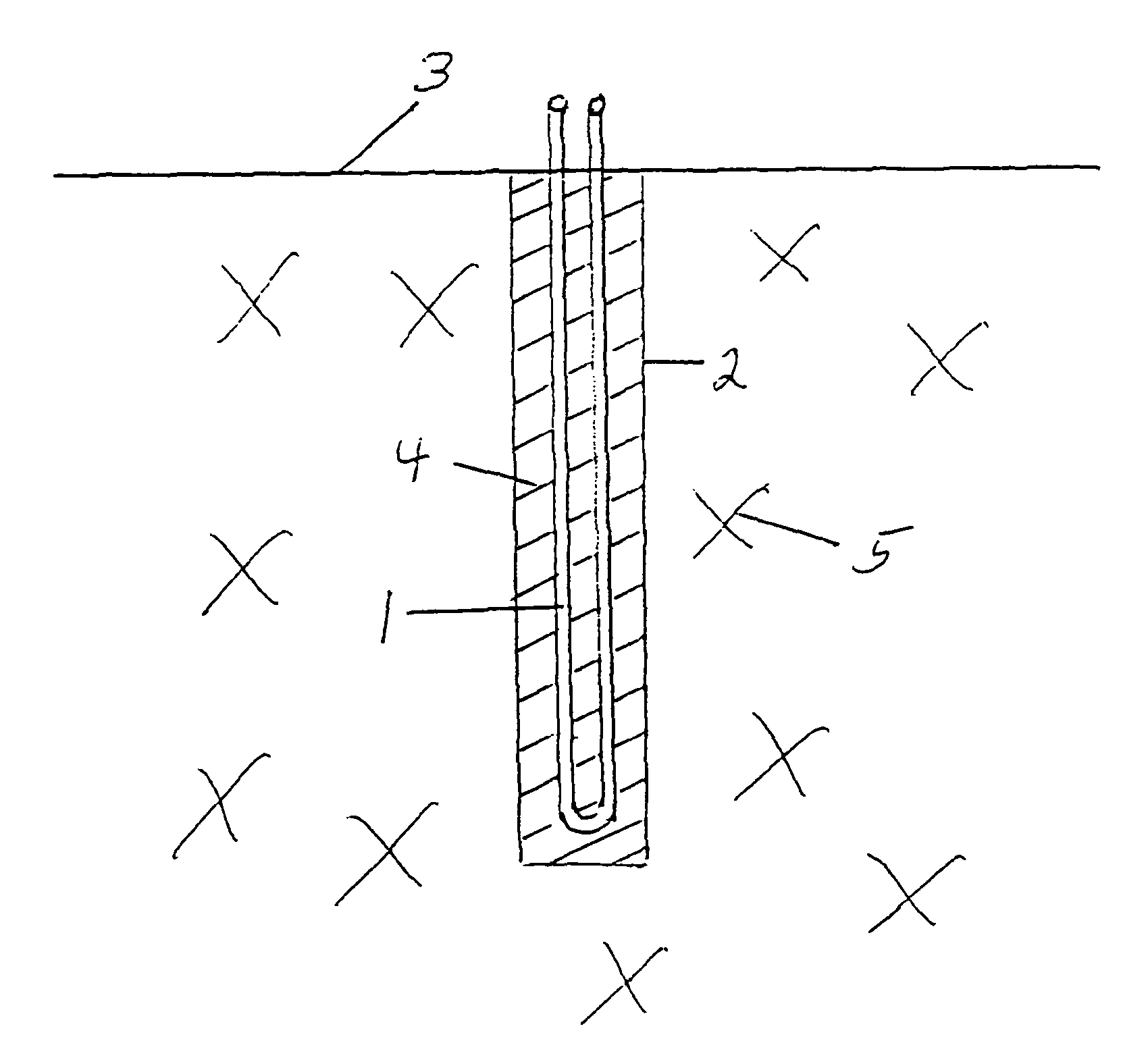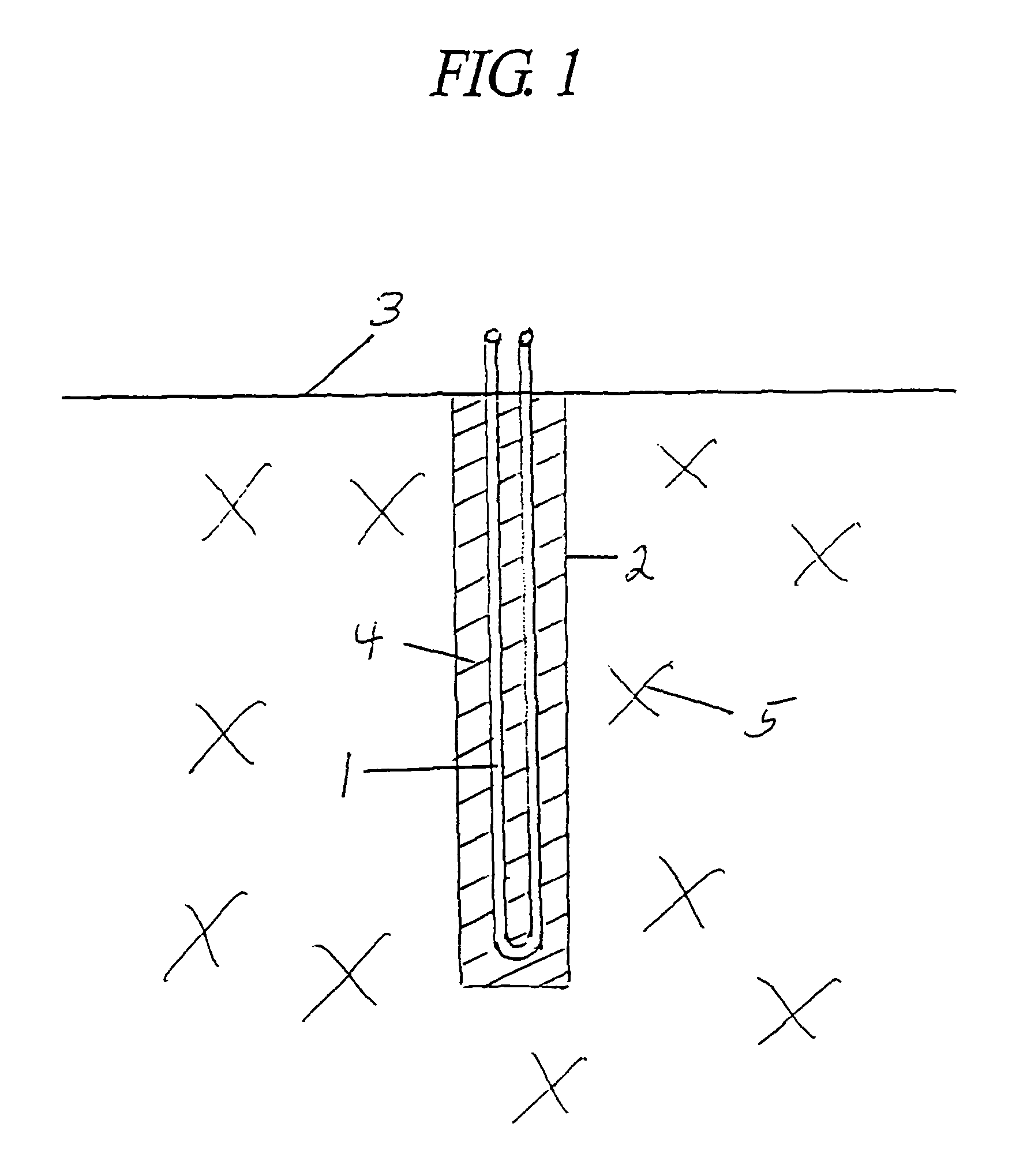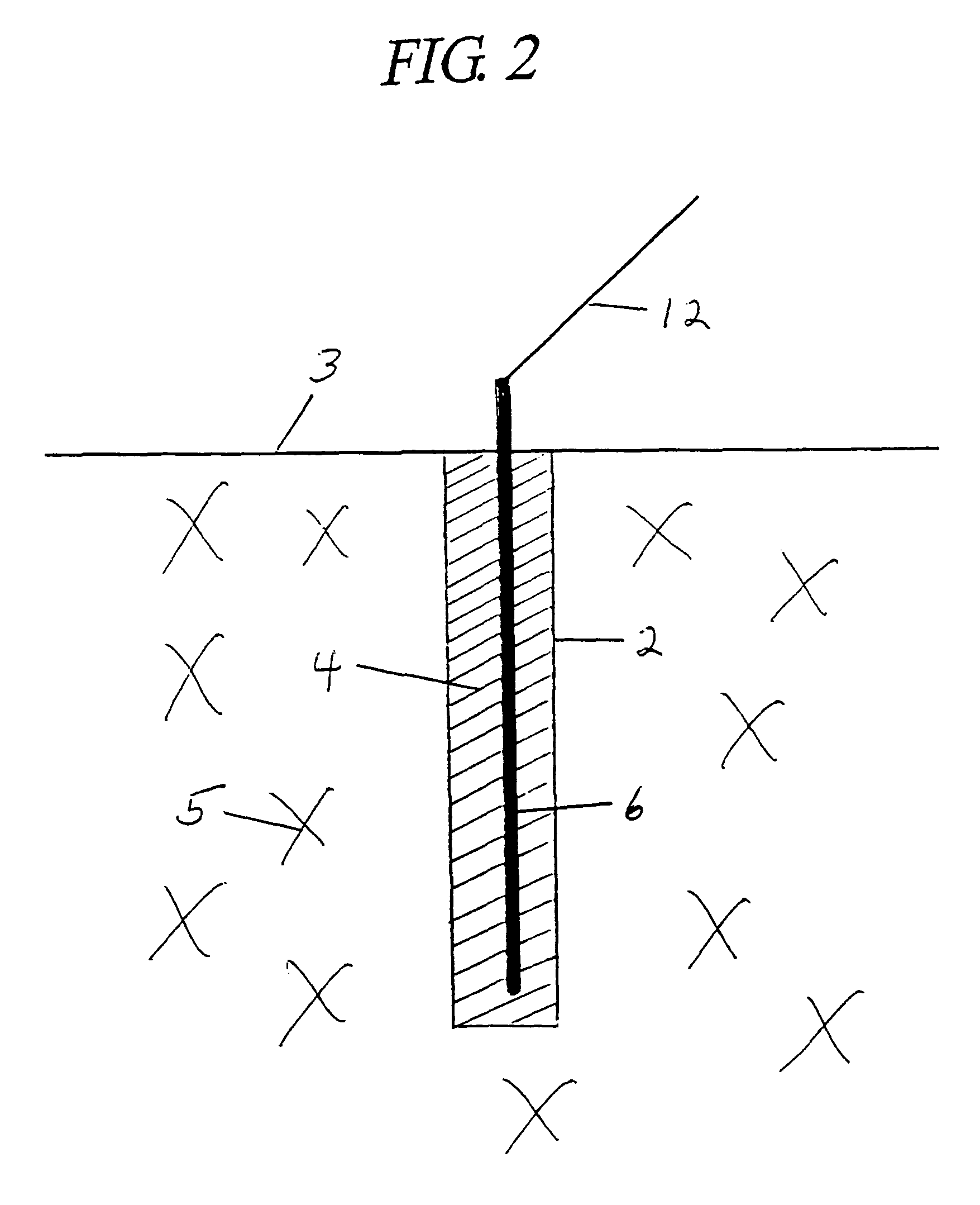Cementitious grout and methods of using same
a cementitious grout and cement technology, applied in the direction of geothermal energy generation, chemistry apparatus and processes, light and heating apparatus, etc., can solve the problems of almost a maximum oxidation impairment, adverse effects on heat transfer rate, aluminum mixing poorly with cement, etc., and achieve good geothermal electrical transfer and good geothermal heat transfer
- Summary
- Abstract
- Description
- Claims
- Application Information
AI Technical Summary
Benefits of technology
Problems solved by technology
Method used
Image
Examples
Embodiment Construction
[0038]The following detailed description is of the best presently contemplated mode of carrying out the invention. The description is not intended in a limiting sense, and is made solely for the purpose of illustrating the general principles of the invention. The drawings are not necessarily drawn to scale. The various features and advantages of the present invention may be more readily understood with reference to the following detailed description taken in conjunction with the accompanying drawings.
[0039]Referring now to the drawings in detail, where like numerals refer to like parts or elements, there is shown in FIG. 1 a side view of a U loop 1 within a well / hole / borehole 2. The U loop 1 is comprised of at least one of a plastic tubing / piping (typically used with water-source heat pump systems, which systems are well understood by those skilled in the art) and a metal tubing / piping (typically used in conjunction with DX heat pump systems, which systems are well understood by tho...
PUM
| Property | Measurement | Unit |
|---|---|---|
| particle size | aaaaa | aaaaa |
| pH | aaaaa | aaaaa |
| depths | aaaaa | aaaaa |
Abstract
Description
Claims
Application Information
 Login to View More
Login to View More - R&D
- Intellectual Property
- Life Sciences
- Materials
- Tech Scout
- Unparalleled Data Quality
- Higher Quality Content
- 60% Fewer Hallucinations
Browse by: Latest US Patents, China's latest patents, Technical Efficacy Thesaurus, Application Domain, Technology Topic, Popular Technical Reports.
© 2025 PatSnap. All rights reserved.Legal|Privacy policy|Modern Slavery Act Transparency Statement|Sitemap|About US| Contact US: help@patsnap.com



